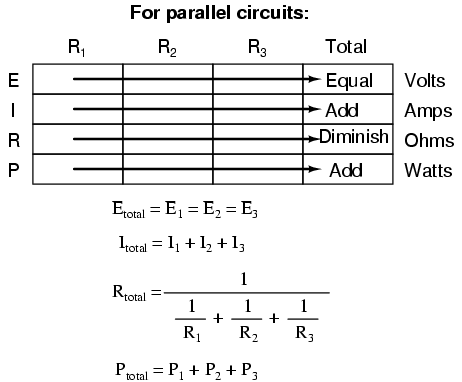Shortest Paths
A few weeks back I mentioned a well known resource minimization problem called the Traveling Salesman, and a far out "solution" to an analogous problem (scavenging) leveraging life. Graph theory is an area rich in algorithms which are designed to yield optimal, or more often good enough answers to problems which can't be computed exhaustively1. In this morning's riff I'll explore similarities between shortest paths, current flow and capitalism and hopefully learn a little in the process.
Ohm's Law

Current flow through parallel networks (optional paths) is inversely proportional to the resistance along each path. Put another way, current automatically finds and flows along the most energy efficient path between potential differences. The shortest path for circuits can be thought of as the set of currents which optimize flow. An interesting result of parallel flow is that a single zero resistance path nullifies current through alternative routes (commoditize the complement2).
Ohm's law states that the current through a conductor between two points is directly proportional to the potential difference across the two points, and inversely proportional to the resistance between them.
(source)
Pure Capitalism
Like current, liquid capital flows along the path of least resistance between potential differences defined by supply, demand, and available business resources. Government tax and business margins act as resistance to resource flow along economic paths. In capitalism competition is the result of alternatives, and consumers reinforce the paths of least resistance.
Asymmetries in liquidity, demand, and information are analogous to potential differences. This potential enables shrewd businesses to capitalize on economic forces and satisfy market needs. This motive force also leads to a continually evolving market as technology advances, and society's tastes shift.
Economic systems: is a set of institutions for allocating resources and making choices to satisfy human wants.
Resource allocation is the assignment of resources to specific tasks to determine the basic economic choices, which are what to produce, how to produce, and for whom to produce for.
Pure Capitalism: is an economic system in which individuals own productive resources, and those individuals can use resources in whatever manner they choose, subject to common productive legal restrictions. In other words, it is the private ownership of productive resources including labor and the use of market mechanism and prices to coordinate economic activities. This system concerns the three Ps, prices, profits, and private property. This economic system is sometimes referred to as a laissez-fair system. Producing those goods and resources that people will buy at profitable prices will yield efficiency. In fact, advocates of this system argue that it encourages efficiency, stability of output and employment and economic growth. The government is limited to provide certain public goods such as national defense, basic education, and legal systems.
(source)
- O(n!) or O(nn), for n=15, 15! is greater than a trillion operations
- Commoditizing the complement in regards to current flow is the result of offering a free (no resistance) alternative to consumers, depriving competition of capital flow, and encouraging purchases of a business' high margin product or service.
Related links: